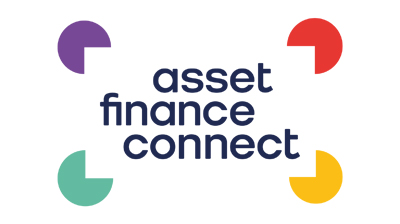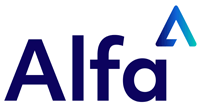‘Locked liquidity in industry’
A recent study by SFS demonstrates that industrial companies have tied up tremendous amounts of capital in the purchase of machinery and equipment. Working capital that could otherwise be available for use in the short term for purposes such as product development, remains locked in the outright equipment purchase in the manufacturing sector. Over the long term, this can slow companies’ growth and harm their competitiveness.
SFS modelled levels of locked liquidity in the four main Nordic countries over the next four years (between 2015 and 2018), both as financial volumes and as a proportion of gross domestic product (GDP). The estimates, from what SFS terms “a highly conservative model” are shown in the table. The key reason for the difference in the percentage levels of GDP is the fact industrial companies in Sweden and Finland have a greater share in their national output.
Locked liquidity in Nordic manufacturing, 2015−2018
| Total amount (€ m) | % of GDP | Contribution to GDP by SMEs (%) | Amount for SMEs (€ m) | Amount for large companies (€ m) | |
|---|---|---|---|---|---|
| Denmark | 2,564 | 0.23 | 45 | 1,154 | 1,410 |
| Finland | 2,890 | 0.34 | 28 | 809 | 2,081 |
| Norway | 3,503 | 0.21 | 49 | 1,716 | 1,787 |
| Sweden | 6,237 | 0.35 | 36 | 2,245 | 3,992 |
Source: Siemens Financial Services, Locked Liquidity in Industry, January 2015
The amounts of locked liquidity amongst SMEs are also revealing. These firms are important players in the Nordic economies, noticeably so in Denmark and Norway, and with bank lending continuing to tighten, having working capital tied up in outright equipment acquisition is likely to be restrictive.
Alternative financing solutions like leasing and hire-purchase models can help release locked liquidity. As a result, equipment and machinery no longer have to be purchased. Rather, they can be financed through the entire term of the agreement. In the process, liquidity is protected, and traditional lines of credit do not have to be used. At the same time, companies acquire the latest technology and maintain the flexibility they need to make additional or short-notice investments. The costs for installation, upgrades and maintenance can frequently be included in the instalment payments as well.
The SFS report reveals that there is a significant reserve of untapped liquidity potential in manufacturing industry across the globe, and that the wider use of asset finance could unlock levels of capital representing, on average, around 6% of annual profits. It concludes: “The use of asset financing tools, such as leasing, to unlock that liquidity is becoming increasingly urgent in all the countries studied. As credit conditions have tightened (possibly in the long term), mature industrial countries need to make the most efficient and effective possible use of working capital in order to finance sustainable growth and maintain their competitive edge.”
How to increase cost efficiency in healthcare

Citing the above research amongst others, Carl Ahlgren, head of Public Sector & Healthcare Sales for the Nordic countries and UK at SFS (pictured above), writes in a recent article that there are ways that intelligent use of financing can lead to increased efficiency and reduced costs.
Ahlgren notes that lately there has been discussion about increased savings requirements and cutbacks in Swedish healthcare. Many of the major hospitals face heavy demands for savings in 2015 and protracted negotiations over severe austerity measures have led to protests that both hospital business and patient safety are threatened.
In its annual report, the Euro Health Consumer Index, Health Consumer Powerhouse compares topics including the efficiency, outcomes and waiting times in EU countries’ healthcare sectors. In 2012, the report placed Swedish healthcare in sixth place, but Sweden fell back in the following year to 11th, and slipped another place to 12th in the latest poll for 2014. Ahlgren comments: “All over the world there are new health challenges as a consequence of demographic changes: we are living longer and therefore require more advanced care.”
Investment in medical equipment represents only around 5% of total healthcare costs in most countries’ healthcare systems, yet access to modern medical technology plays a big role in efficiency and safety. For example, technological development has reduced MRI scan times by up to 75% since the turn of the millennium. The case is the same for many medical conditions, where new and updated technologies can enable faster and more reliable diagnoses, as well as keep costs down.
However, with pressed resources and hard savings requirements, managing the need to update medical technology can be a difficult equation for hospitals and clinics. Nonetheless, Ahlgren points to research showing that the amount of ‘locked liquidity’ tied up in outright equipment purchase in the Swedish healthcare sector totals billions of euros.
In view of the restriction on access to capital, methods of financing such as operating leases, have become an increasingly common way to finance investments without tying up valuable capital. With such a lease, the financing company is responsible for the future residual value risk and the hospital does not have any residual value or depreciation risk. By making use of financing techniques, the cost of the investment is spread over regular payments across the life of the equipment. Benefits include greater efficiency and patient flow-through, reducing the costs per patient, and the avoidance of costly processes and outdated technology, while capital may be used for other investment in the business.
Ahlgren concludes: “Access to new and modern technology supports a safe and effective healthcare sector. Continued focus on providing the best possible technology can be made possible with these funding techniques and thus counteract a downward spiral where outdated and inefficient technology equipment leads to lower efficiency − a severe blow to already strained healthcare institutions.”







